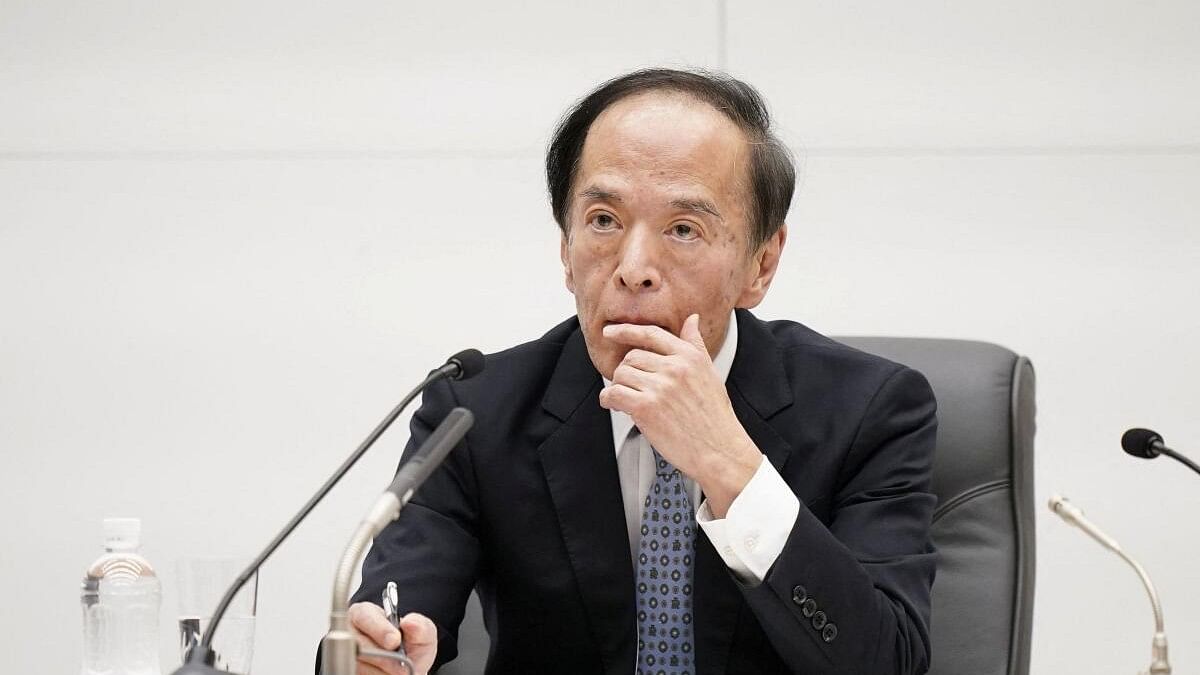
Bank of Japan Governor Ueda speaks at a press conference after its policy meeting in Tokyo.
Credit: Reuters Photo
Japan has accumulated debt equivalent to two and a half times the size of its own economy. Remarkably, it has managed to maintain yields on government bonds at rock-bottom levels, all while investor confidence remains at an all-time high. According to the Bank of Japan, at the end of 2019, the debt stood at an astounding 1,328,000,000,000,000 yen.
But how did Japan find itself in this situation? Japan’s descent into its debt trap began in the 1990s with the burst of a real estate bubble. This problem was further compounded by high demand for stimulus packages and an ageing population, which has caused Japan’s debt to continually pile up until at least 2021. In any other country, this situation would have wreaked havoc on the economy and led to political chaos. However, with Japan, at least on the surface, things look different.
So, how has Japan managed to sustain itself in the face of such mounting debt? The answer lies in a clever strategy employed by the Japanese government. They use a scheme of monetizing government debt, where the Bank of Japan purchases government bonds to finance the government’s spending needs. This, in turn, keeps interest rates low. These low interest rates allow the government to avoid spending a significant portion of its income on repaying these bonds. In fact, 70% of the bonds are purchased by the Bank of Japan, while the rest are bought by private and institutional investors. During the pandemic, as a part of the anti-virus scheme, the bank removed its self-imposed ceiling on Japan Government Bonds (JGBs) purchases, granting itself unlimited power to buy them. The government has also astutely leveraged the ageing population, which believes that government bonds are the safest way to invest their savings. As a result, most of the debt is held domestically, explaining how Japan has managed its debt burden.
Unconventional monetary policy
Unconventional monetary policies are those that fall out of line with traditional monetary policies with the same objective of managing interest rates. Japan uses two such unconventional means: quantitative easing and forward guidance. Quantitative easing, a type of emergency monetary policy, involves the central bank buying a large number of government bonds to maintain interest rate levels. In 2001, the Japanese economy used this approach, but it was inefficient, leading to the introduction of QQE2 in October 2014. While Japanese equities increased by 33% in the following eight months, there was still no indication of development. In January 2016, out of desperation, the BOJ announced negative interest rates. These easy money policies by the BOJ reduce local interest rates, which, in turn, reduces domestic asset returns. Additionally, they lower returns on foreign assets, as Japanese financial institutions must spend more on currency hedges than they earn from foreign assets like sovereign bonds.
In addition to two decades of quantitative easing, the government adopted forward guidance, a means of communicating with the market about the economic state and future actions. They promised extensive interest and inflation targeting. Japan’s economy has not benefited from interest rate manipulation or a growing, enormous fiscal deficit for nearly 30 years. The effectiveness of these Keynesian treatments should be questioned. If not, the United States and Europe may follow Japan’s example.
The Japanese government has always feared a change in market expectations that might arise due to lower demand for bonds caused by a loss of trust in the government, leading to high interest rates. However, what Japan teaches us is that such unconventional monetary policy can only be seen as a short-term recovery mechanism and not a safety net for decades. The most obvious ways of recovering from the debt seem to be far-fetched, such as a cut in government expenditures, which will only mean a drop in security schemes and a political non-starter for an ageing population, while a rise in taxes will only confiscate the wealth of the younger generations, stagnating growth in the country. On the other hand, it seems nearly impossible to induce an economic growth rate that is higher than the debt with a declining population.
The only way out appears to be an increase in inflation or writing off the debt, both of which would be seen as betrayals to the domestic population, resulting in a loss of trust and political confidence among the people. Even though it’s miraculous how Japan has managed to persist with its rising debt and unconventional monetary policies, the country has seemingly exhausted its miracles, and time is not on its side.
(The writer is a student at the Indian Institute of Foreign Trade, Delhi)